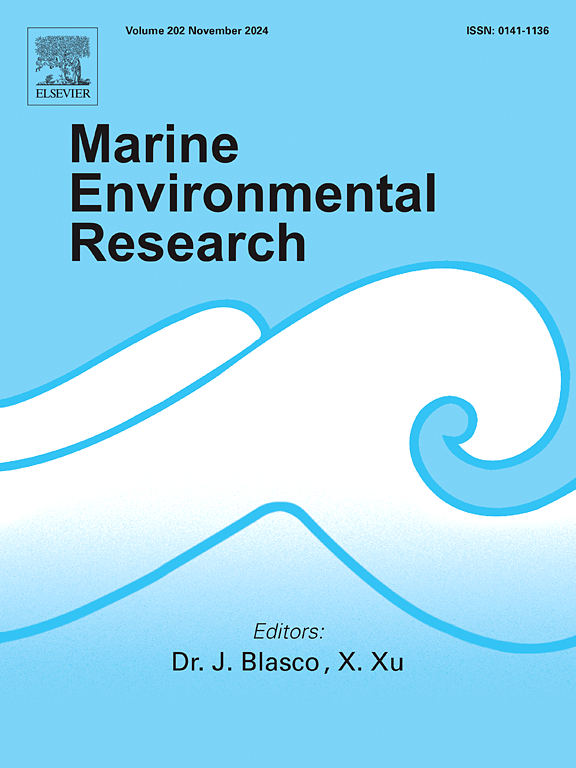Environmental effects monitoring of offshore oil and gas activities on the Norwegian continental shelf: A review
IF 3
3区 环境科学与生态学
Q2 ENVIRONMENTAL SCIENCES
引用次数: 0
Abstract
This review examines the evolution and findings of Norway's offshore environmental monitoring (OEM) program over the past five decades. The program targets soft sediments, water column organisms, and deep-water epifauna across the Norwegian Continental Shelf (NCS) to assess the impacts of offshore oil and gas activities. The program is required by Norwegian authorities and financed by oil and gas companies operating on the NCS. Initially prompted by widespread effects from oil-contaminated drill cuttings (OBM-DC) discharges, the first sediment quality monitoring came in 1973, and grew into a regional sediment quality monitoring program in 1995. A ban on discharge of OBM cuttings on the NCS was implemented in 1993, and the following years saw a clear reduction in areas with impacted sediments. Currently, significant contamination and macrofauna disturbances are typically confined within 250–500 m of DC discharge points. In the 1990s, concerns over increasing produced water (PW) discharges led to development of effect monitoring in the water column, with focus on fish and mussels as bioindicators. These in situ effect surveys have shown localized impacts near PW outlets. Other fish surveys have revealed elevated DNA adduct levels in demersal fish (haddock) in several areas on the NCS, but the causality of this phenomenon remains unclear. Deep-water petroleum exploration has necessitated visual surveys to map protected benthic epifauna communities, such as corals and sponges, though the methodology's suitability for assessing biological impact is uncertain. Future recommendations include redesigning sediment surveys to address combined stressors from the petroleum industry, fisheries, and climate change, adopting recent methodological and statistical advancements, and improving integration across program elements. This review describes how the offshore monitoring on the NCS has evolved in response to changing environmental concerns, regulations and industrial practices, providing insights for enhancing ecological protection in offshore petroleum activities.

挪威大陆架海上石油和天然气活动的环境影响监测:综述
本文回顾了过去50年来挪威近海环境监测(OEM)项目的发展和发现。该项目针对挪威大陆架(NCS)的软沉积物、水柱生物和深水外生动物,以评估海上油气活动的影响。该项目由挪威当局要求,并由在NCS运营的石油和天然气公司提供资金。最初是由于受石油污染的钻屑(OBM-DC)排放的广泛影响,1973年开始了第一次沉积物质量监测,并于1995年发展成为区域性沉积物质量监测项目。1993年实施了禁止向NCS排放OBM岩屑的禁令,随后几年受影响沉积物的地区明显减少。目前,严重污染和大型动物干扰通常局限在直流排放点250-500米范围内。在20世纪90年代,对采出水排放量增加的担忧导致了水柱效应监测的发展,重点是鱼类和贻贝作为生物指标。这些原位效应调查显示了PW出口附近的局部影响。其他鱼类调查显示,在NCS的几个地区,底栖鱼类(黑线鳕)的DNA加合物水平升高,但这一现象的因果关系尚不清楚。深水石油勘探需要目视调查来绘制受保护的底栖动物群落,如珊瑚和海绵,尽管这种方法是否适合评估生物影响尚不确定。未来的建议包括重新设计沉积物调查,以解决来自石油工业、渔业和气候变化的综合压力,采用最新的方法和统计进展,并改善项目要素之间的整合。本文介绍了NCS海上监测是如何随着环境问题、法规和工业实践的变化而发展的,为加强海上石油活动的生态保护提供了见解。
本文章由计算机程序翻译,如有差异,请以英文原文为准。
求助全文
约1分钟内获得全文
求助全文
来源期刊

Marine environmental research
环境科学-毒理学
CiteScore
5.90
自引率
3.00%
发文量
217
审稿时长
46 days
期刊介绍:
Marine Environmental Research publishes original research papers on chemical, physical, and biological interactions in the oceans and coastal waters. The journal serves as a forum for new information on biology, chemistry, and toxicology and syntheses that advance understanding of marine environmental processes.
Submission of multidisciplinary studies is encouraged. Studies that utilize experimental approaches to clarify the roles of anthropogenic and natural causes of changes in marine ecosystems are especially welcome, as are those studies that represent new developments of a theoretical or conceptual aspect of marine science. All papers published in this journal are reviewed by qualified peers prior to acceptance and publication. Examples of topics considered to be appropriate for the journal include, but are not limited to, the following:
– The extent, persistence, and consequences of change and the recovery from such change in natural marine systems
– The biochemical, physiological, and ecological consequences of contaminants to marine organisms and ecosystems
– The biogeochemistry of naturally occurring and anthropogenic substances
– Models that describe and predict the above processes
– Monitoring studies, to the extent that their results provide new information on functional processes
– Methodological papers describing improved quantitative techniques for the marine sciences.
 求助内容:
求助内容: 应助结果提醒方式:
应助结果提醒方式:


